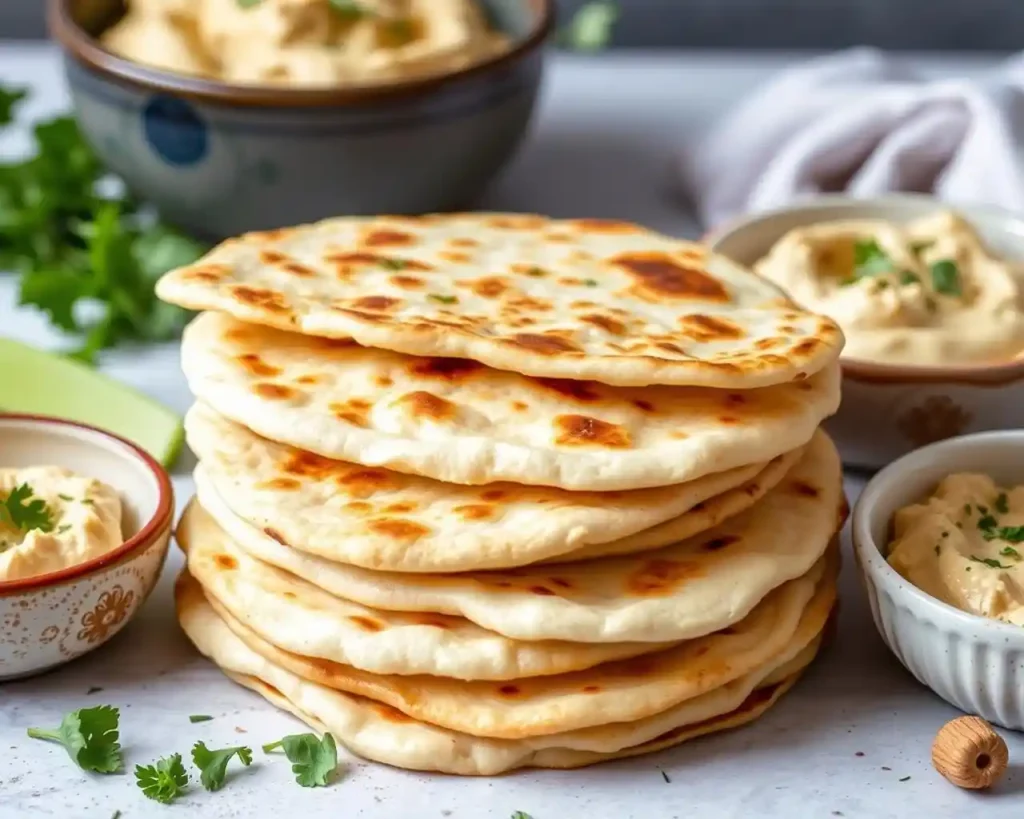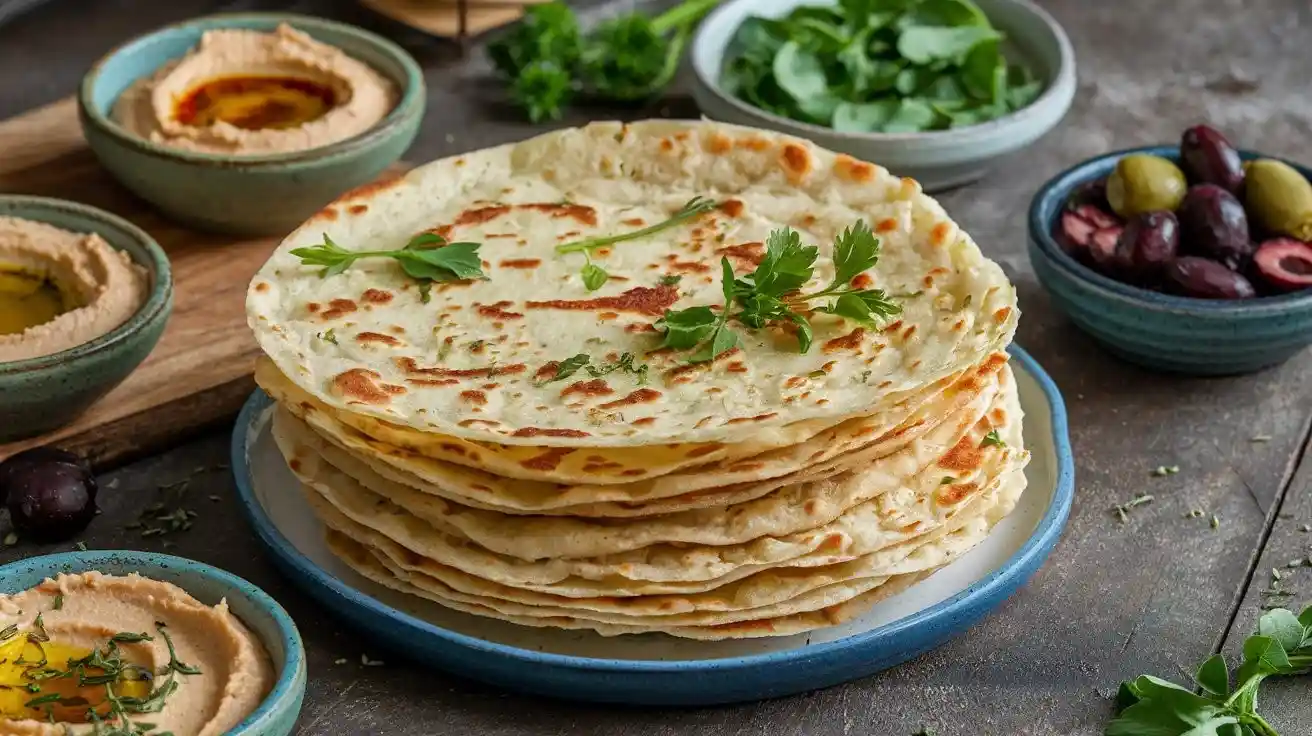Looking for a wholesome twist on flatbread that’s both nutritious and delicious? This Cottage Cheese Flatbread recipe delivers just that! Made with the protein-packed goodness of cottage cheese, this flatbread is soft, chewy, and perfect for pairing with your favorite toppings or dips. Whether you’re looking for a healthy base for breakfast, a snack, or a light dinner, this flatbread will become a go-to in your kitchen. Plus, it’s easy to make and highly versatile. Follow this guide for tips on achieving the perfect flatbread texture every time!
Table of Contents
- Why Cottage Cheese Flatbread?
- Ingredients for Cottage Cheese Flatbread
- Step-by-Step Instructions for Cottage Cheese Flatbread
- Tips for Perfect Flatbread
- Nutritional Benefits of Cottage Cheese
- Topping Ideas for Your Flatbread
- Storing and Serving Suggestions
- FAQs: Troubleshooting and Variations
- Related Recipes
Why Cottage Cheese Flatbread?
Cottage cheese has made a resurgence in recent years, thanks to its high protein content and creamy texture. When used in baking, it not only adds a subtle tanginess but also keeps your flatbread soft and tender. Plus, incorporating cottage cheese flatbread into your diet means you’re enjoying a deliciously balanced snack that’s light yet satisfying.
Whether you’re looking for a healthy alternative to traditional flatbreads or a way to boost your protein intake, cottage cheese offers a range of benefits (read more about the health benefits of cottage cheese from TIME.com).
Ingredients for Cottage Cheese Flatbread
To make this wholesome cottage cheese flatbread, you only need a few simple ingredients that you likely already have on hand.
- 1 cup cottage cheese (smooth or slightly chunky, based on preference)
- 1½ cups all-purpose flour (plus more for dusting)
- 1 tsp baking powder
- ½ tsp salt
- 1 large egg
- 2 tbsp olive oil (for moisture and richness)
- 1 tbsp fresh herbs (optional, like rosemary or thyme for flavor)
Feel free to experiment with whole-wheat or gluten-free flour for a different texture and nutritional profile. You can also add extra flavor by incorporating spices or seeds into the dough.
Step-by-Step Instructions for Cottage Cheese Flatbread
1. Mix the Dough
In a large mixing bowl, combine the flour, baking powder, and salt. In a separate bowl, whisk the egg and cottage cheese together until smooth. Slowly incorporate the wet ingredients into the dry mixture, stirring until a sticky dough forms.
2. Knead the Dough
Transfer the dough to a lightly floured surface and knead for 2-3 minutes, just until it becomes smooth. Be careful not to over-knead, as this could result in a tough texture.
3. Rest the Dough
Cover the dough with a clean kitchen towel and let it rest for about 15-20 minutes. This resting period allows the gluten to relax, ensuring a tender, pliable flatbread.
4. Shape the Flatbread
After the dough has rested, divide it into 4-6 equal portions, depending on how large you want each flatbread. Roll each portion into a thin oval or circle (about ¼ inch thick).
5. Cook the Flatbread
Heat a nonstick skillet or cast-iron pan over medium heat. Brush each flatbread lightly with olive oil on both sides. Cook each piece for 2-3 minutes on each side, or until golden brown with a few charred spots.
6. Serve and Enjoy!
Your flatbreads are now ready to be served! They are best enjoyed warm, but you can also store them for later use. Keep reading for serving suggestions and topping ideas.
Tips for Perfect Flatbread
- Don’t Overwork the Dough: As with any flatbread recipe, it’s important not to over-knead the dough. Overworking it will lead to a tougher texture, rather than the soft, pillowy result you’re aiming for.
- Resting is Essential: Allowing the dough to rest for at least 15 minutes will relax the gluten, making it easier to roll out and ensuring that the final product is soft and tender.
- Use Fresh Herbs: If you’re adding herbs to the dough, fresh ones like rosemary or thyme will give a burst of flavor. Dry herbs can work as well, but be sure to use them sparingly.
- Temperature Control: Make sure your pan is hot enough to create a nice crust but not too hot that it burns the flatbread before cooking through.
Want more tips on how to ensure the best baking results? Read this handy guide on oven temperature and baking techniques.

Nutritional Benefits of Cottage Cheese
Cottage cheese is a nutritional powerhouse, packed with protein and low in fat, making it an ideal ingredient for those seeking a balanced diet. Here’s why you should consider incorporating more cottage cheese into your meals:
- High in Protein: Cottage cheese contains casein, a slow-digesting protein that can help you feel full longer.
- Rich in Calcium: Essential for strong bones and teeth, cottage cheese is a great source of calcium.
- Low in Calories: Despite its creamy texture, cottage cheese is relatively low in calories, making it a healthy choice for those watching their intake.
For more on the health benefits of cottage cheese, check out this article from Time.
Topping Ideas for Your Flatbread
This cottage cheese flatbread is versatile and can be topped with a wide variety of ingredients to suit your taste preferences. Here are a few topping ideas to get you started:
- Classic: A drizzle of olive oil, salt, and a sprinkle of fresh herbs
- Greek-inspired: Top with hummus, olives, and feta cheese
- Avocado toast: Mash up some avocado with a squeeze of lemon and red pepper flakes
- Sweet: Spread a little honey and sprinkle with cinnamon for a sweet treat
If you’re in the mood for something different, why not pair it with seasonal recipes like this Persimmon Bread for a sweet and savory combo?

Storing and Serving Suggestions
Storing:
Cottage cheese flatbread can be stored for up to 3 days in an airtight container at room temperature. If you want to keep it longer, simply place it in the refrigerator for up to 5 days.
Freezing:
To freeze, wrap each flatbread individually in plastic wrap and place in a freezer bag. They’ll stay fresh for up to 3 months. When you’re ready to enjoy them, thaw at room temperature and reheat in a skillet or microwave.
Serving:
Serve your flatbread as a base for dips like hummus or tzatziki, or use it as a wrap for sandwiches and gyros. It also pairs beautifully with soup or salad, adding a hearty element to lighter dishes.
FAQs: Troubleshooting and Variations
Q: Can I use whole wheat flour for this recipe?
A: Absolutely! Whole wheat flour will add a nutty flavor and more fiber to the flatbread. You may need to add a bit more liquid to the dough since whole wheat flour absorbs more moisture than all-purpose.
Q: Can I make this flatbread gluten-free?
A: Yes! You can substitute the all-purpose flour with a gluten-free blend. Just ensure that your blend contains xanthan gum for elasticity.
Q: Can I add toppings before cooking the flatbread?
A: Yes, feel free to add toppings like seeds or herbs before cooking. Press them gently into the dough to ensure they stick.
For a bread recipe that shares similar health-conscious ingredients, check out this Cottage Cheese Bread Recipe.
Related Recipes
Looking for more bread ideas? Explore these unique and flavorful recipes:

